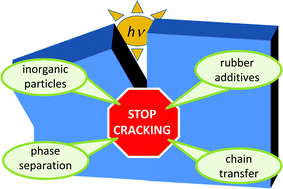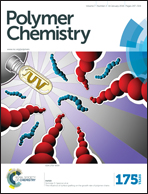Toughening of photo-curable polymer networks: a review†
Abstract
Photo-curable resins based on multifunctional acrylate monomers are commonly applied as thin films (e.g. protective coatings, printing inks, etc.) and in recent years are also used for the fabrication of bulk objects such as dental fillings and 3D-printed parts. While rapid curing and good spatial resolution are advantages to these systems, brittleness and poor impact resistance due to inhomogeneous polymer architecture and high crosslink density are serious drawbacks. By comparison, epoxy thermoset resins suffered many years ago from similar problems, but since then are found in ever demanding applications thanks to a variety of approaches to increase polymer toughness. Based on these successes, researchers have tried to translate strategies for toughening epoxy resins to photopolymer networks. Therefore, this review surveys relevant scientific papers and patents on the development of crosslinked epoxy-based polymers and also photo-curable polymers based on multifunctional acrylates with improved toughness. Strategies developed to reduce brittleness include working with monomers, which intrinsically give tougher polymers, particulate additives, and alternate forms of polymerization and polymer architecture (e.g., dual-cure networks, interpenetrating networks, thiol–ene chemistry). All of these strategies have advantages and yet application specific rigours must also be considered before and during formulation development.

- This article is part of the themed collection: Polymer Chemistry 15th anniversary regional spotlight collection: Europe

 Please wait while we load your content...
Please wait while we load your content...